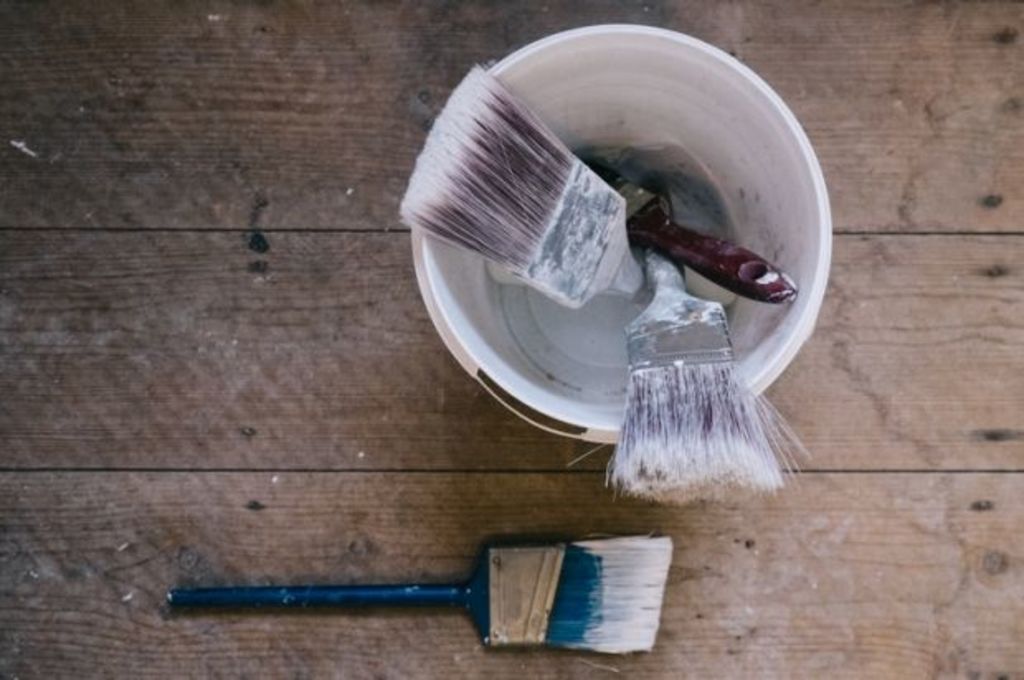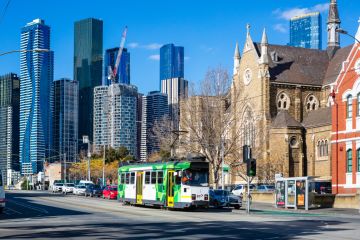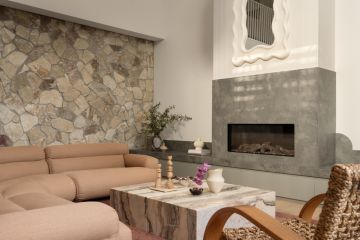Sourcing safe products and materials for your home renovation

About six million (32 per cent of) Australians undertake minor improvements to their homes each year according to a recent Morgan Gallop Poll.
With so many decisions at stake in selecting products for the home – from price and aesthetics to durability and environmental issues – it’s easy for health considerations to slide.
The difficulty of accessing health information on specific renovation products doesn’t help. Most of us have heard of the health risks of formaldehyde and VOCs (volatile organic compounds) in the home, but actually steering clear of such toxic chemicals isn’t a clear-cut path.
According to Jo Immig, head of the National Toxics Network, lack of effective regulation on industrial chemicals feeds into the minefield. “Generally people walk around with the belief that anything that’s for sale has somehow been tested by some big magic testing authority,” she says.
Chemicals used in everyday renovation products – such as paint, surface finishes, glues and other building materials – come under the classification of “industrial chemicals”. “In Australia we have a regulator to regulate those chemicals,” Immig says. “But the fact is we have 34,000 un-assessed industrial chemicals that are in common use in everyday products in Australia.”
In view of this, Immig, who wrote the Total Environment Centre’s Safer solutions for safer renovations publication, has some guiding principles for selecting safer products when it comes to beautifying your home.
 Read between the “natural” lines. Photo: Stocksy
Read between the “natural” lines. Photo: Stocksy
Keep it natural
Choose natural, raw and unprocessed products where possible. “A piece of wood without any paint on it is a much better idea than lots of sawdust that’s all glued together and made into some artificial timber,” Immig explains.
Terms like “natural” and “organic” can be abused. Read the manufacturing information to ensure you’re getting the real deal. And, while those wood or bamboo floors might be advertised as “natural”, take note of what they’re varnished, treated or glued with.
Minimise chemicals
Select products with the least amount of chemicals. One chemical is usually a safer bet than twenty. Indoor plants can also minimise airborne chemical pollutants.
Choose water-based
Favour water-based products over those based on chemical solvents. A solvent is a substance (usually a liquid) able to dissolve other substances. Chemical solvents include toluene in paint, varnishes and adhesives.
Buy secondhand
Anything second-hand may be better from an outgassing point of view, as well an environmental one. Many building and finishing materials, including paint, varnish, sealers, glues, rubber cement and PVC-vinyl, outgas VOCs – toxic chemicals that continue to emit from the material they’re in.
Ventilate
To reduce the chemical cocktail inside, good ventilation is fundamental.
 Choose your flooring carefully. Photo: Stocksy
Choose your flooring carefully. Photo: Stocksy
SAFER MATERIALS FOR YOUR HOME
Flooring
Choose natural materials, like solid wood, stone, sisal, coir and jute rather than synthetics such as vinyl or polyester carpet. Wool is a good option, but difficult to find untreated with stain-resistant chemicals or pesticides. Consider what lurks in finishes, sealants, adhesives and treatments applied to flooring products. Bamboo flooring often uses urea-formaldehyde adhesives – look for adhesives and finishes certified as low in VOCs.
Paints
Commercial paints are based on plastic technology and most contain VOCs. The darker the pigment, the more VOCs paint is likely to contain. Choose water-based over solvents. Plant and mineral based paints are less toxic but not as readily available. These can be ordered online.
Varnishes and stains
Natural oils and waxes are the safest options. Be aware, these aren’t as durable and may require more regular application than those based on synthetic ingredients such as polyurethane.
Adhesives and sealants
Choose water-based, with zero or low VOC.
 There’s more to consider about paint other than what colour. Photo: Stocksy
There’s more to consider about paint other than what colour. Photo: Stocksy
Furniture and cabinetry
Timber, steel and glass are safer options than manufactured products like laminate, melamine and engineered wood (particleboard, fibreboard). The latter often contain formaldehydes and can be difficult to avoid in furniture and cabinetry products, Immig says. Source eco-accredited options.
Furnishings
Go for organic hemp, wool, cotton, linen and silk. In the bedroom, Immig suggests natural rubber (latex) mattresses or 100 per cent cotton or wool futons.
Kitchens
“The big problem in kitchens is plastic,” Immig says. This includes plastic utensils, plastic kettles and coffee makers. Avoid plastic and cookware with non-stick coatings.
Factor in research time
With natural products generally more expensive, a totally natural home isn’t always achievable. Immig says to keep it in perspective. Approach it from the point of view of total chemical load as well as the life cycle of the house and its members. For example, you may not worry as much about wool insulation but put more money into the flooring and paint in your baby’s room.
Because products are always evolving, Immig emphasises the importance of providing tools for people to research and ask the right questions. “When you’re shopping for any product for your renovation, you have to question: is it made of a natural material, is it water based, does it emit VOCs? Ask the manufacturer and retailer for information such as the Material Safety Data Sheet (MSDS).”
It’s crucial to give yourself plenty of time in advance for planning, researching and sourcing. “Avoid “trying to make those decisions on the fly,” Immig concludes.
 Do your research. Photo: Stocksy
Do your research. Photo: Stocksy
We recommend
States
Capital Cities
Capital Cities - Rentals
Popular Areas
Allhomes
More







